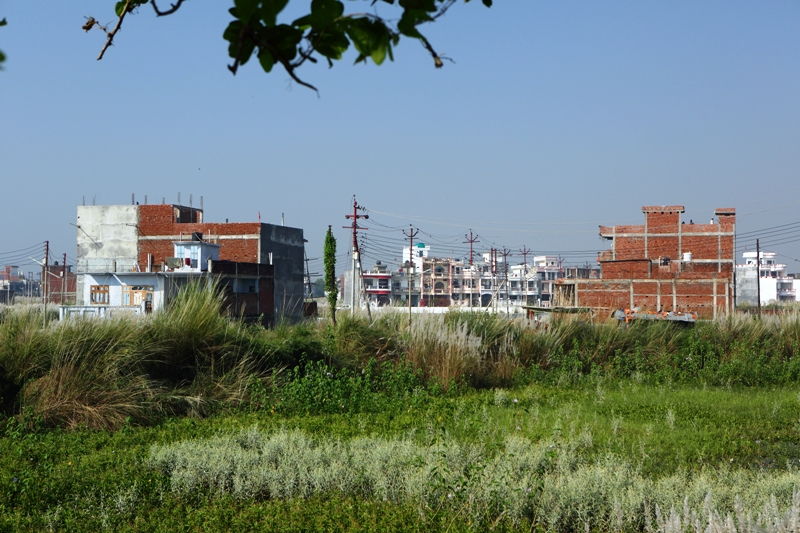
Urban centres and ecosystems share a two way relationship, albeit a skewered one. Cities use the many physical and environmental services that these ecosystems provide, anteing up their own resilience, but with no thought or concern for the preservation or continuity of these service rendering ecosystems. Benefits for the cities include easy access to food and water, available land for building bigger, buffer from floods and recreational, health gains. The ecosystems however only face ‘extraction’.
And the peri-urban areas that house these ecosystems bear the brunt of this ‘extractive‘ nature of urbanisation. Open areas are lost, ecologically sensitive land usurped and fields overrun with cement and mortar. The land turns into a waste dumpyard for the fast growing urban area, leading to a degraded environment that affects the health and the livelihoods of the people living in these peri-urban areas.
And this peri-urban space also supports agriculture that not only enhances the city food basket but helps the urban diet to be diverse and nutritious. Loss of these peri-urban ecosystems can wreck havoc on the food production and supply for the city. With climate change playing a vital role in the increasing trend of disasters across the globe, the health of these ecosystems takes on an added value.
Natural wetlands, mangrove forests, marshes, coral reefs, floodplains; all these contribute immensely in reducing disaster risk. They help in groundwater recharge, flood control, green house gas mitigation, nutrient mitigation, improve soil stability besides educational, recreational and cultural benefits.
Cities are hot beds for green house gas emission (GHG) emission. The peri-urban regions are a potential area for green services and green infrastructure that can reduce this effect in the urban environment through various mitigation processes.
Water scarcity is an urban nightmare, expected to worsen even as India is on a trajectory to become ‘water stressed’ by 2025 and ‘water scarce’ by 2050[1]. The peri-urban areas with healthy vegetation and green spaces can play a vital role to influence the local water availability, storage and purification. Urban sanitation challenge too needs to be addressed holistically, taking into account the complete cycle of toilet access, and then collection, conveyance and treatment of human excreta; and not view the peri-urban areas simply as a sink for their waste
It is time cities and their master plans take into account these shifting and growing fringes that provide these essential ecological and environmental services to the urban hub, if they wish to be truly and really ‘smart’.
This blog is based on an excerpt from ‘Urban Resilience and Sustainability through Peri-Urban Ecosystems: Integrating Climate Change Adaptation and Disaster Risk Reduction’, a Process Guidance and Training Handbook, published by the Gorakhpur Environmental Action Group (GEAG), supported under the ACCCRN initiative of The Rockefeller Foundation.
[1] According to UN-Water, an area is experiencing ‘water stress’ when annual water supplies drop below 1,700 m3 per person. When annual water supplies drop below 1,000 m3 per person, the population faces ‘water scarcity’.